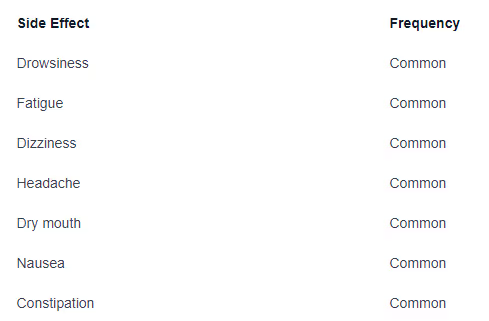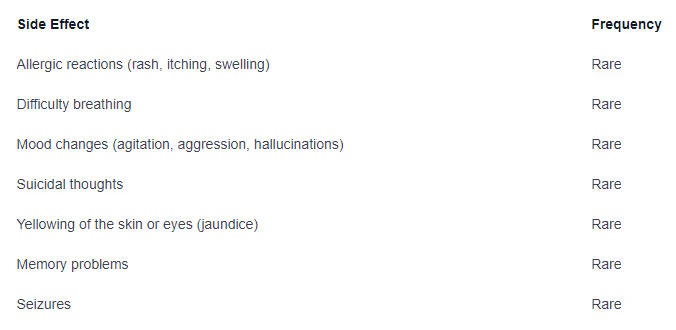What Does Xanax Feel Like? Uses, Side Effects, Interactions

Understanding Xanax
Xanax is a medication that belongs to a class of drugs known as benzodiazepines. It is commonly prescribed to treat anxiety disorders, panic disorders, and certain other conditions. To fully comprehend the effects and uses of Xanax, it is essential to understand what it is and how it works in the body.
What is Xanax?
Xanax, also known by its generic name alprazolam, is a prescription medication primarily used for the management of anxiety disorders. It is a central nervous system depressant that works by enhancing the effects of a neurotransmitter called gamma-aminobutyric acid (GABA) in the brain. By increasing GABA activity, Xanax helps to calm excessive brain activity, resulting in a reduction in anxiety symptoms.
Xanax comes in various forms, including immediate-release tablets, extended-release tablets, and orally disintegrating tablets. The dosage and formulation prescribed depend on the specific needs of the patient and the condition being treated. It is crucial to take Xanax exactly as prescribed by a healthcare professional to ensure its safe and effective use.
How Does Xanax Work in the Body?
Xanax works by binding to specific receptors in the brain called GABA-A receptors. These receptors are responsible for inhibiting or reducing the activity of nerve cells in the brain. When Xanax binds to these receptors, it enhances the effects of GABA, leading to a decrease in neuronal activity and a calming effect on the central nervous system.
The increased GABA activity induced by Xanax can produce a range of effects, including relaxation, sedation, and a sense of tranquility. These effects can help alleviate symptoms associated with anxiety disorders and panic disorders.
It is important to note that Xanax is a potent medication and should only be used under the guidance of a healthcare professional. Abruptly stopping the use of Xanax or using it in higher doses than prescribed can lead to withdrawal symptoms and potential dependence. It is crucial to follow the prescribed dosage and consult with a healthcare provider before making any changes to the treatment regimen.
By understanding what Xanax is and how it works in the body, individuals can have a better grasp of its effects and uses. However, it is always essential to consult with a healthcare professional for personalized advice and guidance regarding the appropriate use of Xanax.
Medical Uses of Xanax
Xanax, a medication belonging to the benzodiazepine class, is commonly prescribed for its effectiveness in managing various mental health conditions. Let's explore the medical uses of Xanax, including its primary role in treating anxiety disorders and panic disorders, as well as other potential applications.
Treating Anxiety Disorders
Xanax is widely prescribed for the treatment of anxiety disorders, including generalized anxiety disorder (GAD), social anxiety disorder (SAD), and panic disorder (PD) with or without agoraphobia. By targeting the central nervous system, Xanax helps to alleviate symptoms of anxiety, such as excessive worry, restlessness, and tension.
The effectiveness of Xanax in treating anxiety disorders is due to its ability to enhance the activity of gamma-aminobutyric acid (GABA), a neurotransmitter that helps to regulate excitability in the brain. By increasing GABA levels, Xanax produces a calming effect, reducing anxiety and promoting relaxation.
Managing Panic Disorders
Xanax is also utilized in the management of panic disorders, a condition characterized by recurrent panic attacks. Panic attacks involve sudden and intense episodes of fear, accompanied by physical symptoms such as rapid heart rate, trembling, and shortness of breath. Xanax helps to reduce the frequency and severity of panic attacks by calming the overactive central nervous system.
It's important to note that Xanax is typically prescribed for short-term use in panic disorders, as long-term use may lead to dependency and tolerance. The goal is to use Xanax as a temporary aid while implementing other therapeutic interventions, such as cognitive-behavioral therapy (CBT), to address the underlying causes of panic disorder.
Other Medical Uses
In addition to anxiety and panic disorders, Xanax may be prescribed for other medical conditions, although these uses are less common. Xanax may be used as a short-term adjunct treatment for depression, particularly when anxiety symptoms are present. It may also be prescribed to manage insomnia, muscle spasms, and certain seizure disorders.
It's important to emphasize that the use of Xanax for these conditions should be based on a thorough evaluation by a healthcare professional. Xanax is a potent medication that requires careful monitoring and should only be used under medical supervision.
The medical uses of Xanax extend beyond anxiety and panic disorders, providing relief for individuals experiencing various mental health conditions. However, it's crucial to remember that Xanax should only be used as part of a comprehensive treatment plan, including therapy and lifestyle modifications, to ensure the best possible outcome.
What Does Xanax Feel Like?
Xanax is a medication commonly prescribed for the treatment of anxiety and panic disorders. Understanding how Xanax affects the body and the sensations it may produce is important for individuals who are prescribed this medication.
Effects of Xanax on the Body
Xanax belongs to a class of medications called benzodiazepines, which work by enhancing the effects of a neurotransmitter called gamma-aminobutyric acid (GABA) in the brain. GABA helps to regulate brain activity, which in turn can reduce feelings of anxiety and promote a sense of calmness.
When Xanax is taken as prescribed, it can produce several effects on the body, including:
- Sedation: Xanax has a calming effect on the central nervous system, which can result in drowsiness and relaxation.
- Reduced Anxiety: Xanax can help alleviate symptoms of anxiety, such as excessive worry, restlessness, and tension.
- Muscle Relaxation: Xanax may cause muscle relaxation, which can be beneficial for individuals experiencing muscle tension associated with anxiety.
- Anticonvulsant Properties: Xanax has anticonvulsant properties, meaning it can help prevent or reduce the frequency of seizures in individuals with certain seizure disorders.
Common Sensations and Experiences
Individual experiences with Xanax may vary, but there are some common sensations and experiences reported by those who take the medication. These include:
- Feeling Calm: Many individuals describe a sense of calmness and relaxation after taking Xanax, which can help reduce anxiety symptoms.
- Reduced Racing Thoughts: Xanax may slow down racing thoughts, allowing individuals to think more clearly and feel more in control.
- Improved Sleep: The sedative effects of Xanax can help individuals with insomnia fall asleep faster and potentially improve the quality of their sleep.
It's important to note that while Xanax can provide relief from anxiety symptoms, it is not a long-term solution. Xanax is typically prescribed for short-term use due to its potential for dependence and addiction. Additionally, the effects of Xanax can vary depending on the individual's tolerance, dosage, and overall health.
If you have been prescribed Xanax, it's crucial to take it as directed by your healthcare provider and communicate any concerns or side effects you may experience. Understanding the potential effects of Xanax can help you have a more informed discussion with your healthcare provider and make the most of your treatment.
Potential Side Effects of Xanax
Xanax, like any medication, can have both common and serious side effects. It's important to be aware of these potential side effects before using Xanax. Always consult with a healthcare professional for personalized information and guidance.
Common Side Effects
Common side effects of Xanax may include:

These side effects are typically mild and tend to subside as the body adjusts to the medication. However, if these side effects persist or worsen, it is important to seek medical advice.
Serious Side Effects and Risks
While less common, there are also serious side effects associated with Xanax. If any of these side effects occur, immediate medical attention should be sought:

It is important to note that this is not an exhaustive list of side effects. Some individuals may experience different side effects or have varying degrees of severity. If any unexpected or concerning side effects occur, it is important to consult a healthcare professional promptly.
Understanding the potential side effects of Xanax is essential for making informed decisions about its use. It is always recommended to discuss any concerns or questions with a healthcare professional who can provide personalized advice based on an individual's specific situation.
Interactions and Precautions
When it comes to taking medication like Xanax, it's important to be aware of potential drug interactions and take necessary precautions to ensure your safety. Understanding how Xanax interacts with other substances and any precautions or warnings associated with its use is crucial for responsible and informed medication management.
Drug Interactions with Xanax
Xanax can interact with various substances, including other medications, alcohol, and certain herbal supplements. These interactions can affect the effectiveness of Xanax or lead to adverse effects. It's important to inform your healthcare provider about all the medications, supplements, and substances you are currently taking or plan to take.
The table below provides an overview of some common drug interactions with Xanax:

It is crucial to consult with your healthcare provider or pharmacist to understand the potential interactions between Xanax and any medications or substances you are using.
Precautions and Warnings
When using Xanax, there are certain precautions and warnings to keep in mind to ensure safe and effective use. These precautions are important for minimizing the risk of adverse effects and ensuring the medication works as intended.
Here are some key precautions and warnings associated with the use of Xanax:
- Xanax should only be used under the guidance of a healthcare professional and as prescribed. It is important to follow the recommended dosage and duration of use.
- Xanax can cause drowsiness, dizziness, and impaired coordination. It is advised to avoid activities that require mental alertness, such as driving or operating machinery, until you know how Xanax affects you.
- Xanax should not be used by individuals with a history of allergic reactions to benzodiazepines or any of its ingredients.
- People with certain medical conditions, such as liver or kidney disease, respiratory disorders, or a history of substance abuse, may require special monitoring or adjustments to their Xanax dosage.
- Xanax is not recommended for pregnant or breastfeeding individuals, as it may pose risks to the fetus or infant.
It is important to discuss your medical history, including any pre-existing conditions or allergies, with your healthcare provider before starting Xanax. They can provide personalized guidance and address any specific concerns you may have.
By understanding the potential drug interactions and taking necessary precautions, you can ensure the safe and effective use of Xanax. Remember to always consult with your healthcare provider or pharmacist for personalized advice and guidance regarding your medication regimen.
Conclusion
Xanax is a medication that has proven to be effective in treating anxiety and panic disorders. However, it is important to note that Xanax should only be used under the guidance of a healthcare professional and as prescribed. While Xanax can provide relief from anxiety symptoms, it is not a long-term solution. The potential side effects and risks associated with Xanax should also be considered before use.
By understanding the potential benefits, risks, and precautions associated with Xanax, individuals can make informed decisions about their treatment options. Overall, Xanax can provide much-needed relief for those experiencing mental health conditions but should always be used responsibly and under medical supervision.
